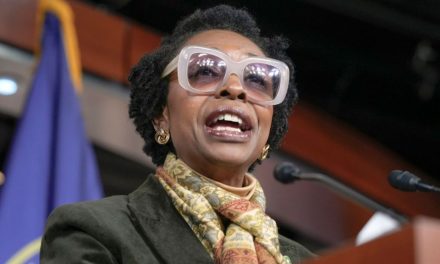 By Aysia Morton
By Aysia Morton
Special to the AFRO
Attending a Historically Black College and University (HBCU) is proven to increase Black and Brown students’ well-being. According to the United Negro College Fund (UNCF), 25% of all African-American graduates in the STEM field come from an HBCU, 46% of African-American women in STEM graduated from an HBCU from 1996-2004. Even though they make up 3% of the country’s colleges, they enroll 10% of all African-American students and graduate 20% of all African Americans. However, despite their distinguished attributes, HBCUs continue to be underfunded, a phenomenon that has a negative effect on their research and laboratories.
HBCUs have been denied funding ever since the nation’s first, Cheyney University of Pennsylvania. According to Brookings Institute, “HBCUs are chronically underfunded due to state underinvestment, lower alumni contributions (related to lower Black incomes and the wealth gap), and lower endowments.”
For decades, a hierarchical system has existed within higher education and has excluded HBCUs. The Carnegie Classification of Institutions of Higher Education is a list that ranks colleges and universities based on their level of research and policy analysis. Martha Donastorg, HBCU innovation reporter, wrote, “there is an unofficial hierarchy system to the classifications that translates into real-world funding.” The Carnegie list classifies colleges and universities by ranking. The highest rank, R1, is considered some of the most prestigious in the world and receives the most funding. No HBCU has ever made it to that list. According to Georgetown University, these are the schools that receive a disproportionate share of research and funding.
Though efforts from the nation to address educational inequities are under way, they need to be increased. Many HBCUs will still struggle to compete with their predominantly White institution (PWI) counterparts. President Joe Biden’s $40 billion proposal to upgrade research infrastructure, half of which was dedicated to HBCUs, Minority Serving Institutions (MSIs), and Tribal Colleges and Universities (TCUs) was proposed to be significantly reduced, from $20 billion to $2 billion. This reduction in federal investment continues to hinder HBCUs, like North Carolina A&T that have large numbers of enrollment and crucial research projects on the horizon, but face an $130 million maintenance backlog.

In looking at technology, HBCUs are critical to the formation of the next generation of science, technology, engineering and math (STEM) careers. Racial and ethnic representation within colleges and universities is fundamental to Black and Brown students’ learning and degree completion, especially within STEM fields. From peers to professors, representation in school and the classroom addresses inequalities in the higher education system and boosts student confidence and feelings of belonging. According to a study by Gallup, Black students receive the strongest endorsements from Black professors. Those with Black teachers feel less pressure to measure up to expectations and can focus more on their learning.
“If there were more Black professors, they could reshape the way people look at concepts, themes, and learning. Higher education is by far, in large, White male dominated. The problem with any White dominated space, is that there isn’t much diversity of thought. As a result, when minority students and students of color enter into higher education spaces with diverse ideas that serve their community they receive fierce pushback. At the core of it all, higher education is racism,” said Adewale Maye, a Masters Candidate in Applied Economics at George Washington University.
HBCUs having to fight for funding makes it hard to foster the next generation of STEM leaders, but they work to do it. Many HBCUs, like Morgan State University, are depending on the state and philanthropic funding that has increased within the last two years. The Maryland Department of Commerce presented Morgan State with $3 million to fully fund three endowed professors in cybersecurity engineering, brain science and psychometrics and predictive analysis. Recently, NASA also granted $72 million to Morgan State and University of Maryland Baltimore College to help further earth and atmospheric sciences. MacKenzie Scott, philanthropist and billionaire, donated a total of $800 million to 23 HBCUs including Prairie View A&M University, Howard University, Morgan State University, and Hampton University.
Yet, without sufficient funding from the federal government, HBCU’s and their research will continue to incur the costs of decades of discrimination.
“HBCUs have received significantly less funding than their predominantly White counterparts. The inadequate funding has led to smaller endowments and smaller operating budgets,” said Tyron McMickens, associate professor of Higher Education at North Carolina Central University.
“However, it is important to note that HBCUs continue to punch well above their weight and disproportionately educate and graduate countless Black students who make meaningful contributions to their communities and the larger global society.”
Help us Continue to tell OUR Story and join the AFRO family as a member – subscribers are now members! Join here!
The post STEM programs at Black institutions underfunded compared to PWIs appeared first on AFRO American Newspapers .











